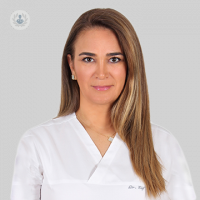How does Invisalign compare with other types of invisible braces?
Autore:There are a number of different types of invisible braces available to the patient who wants to straighten their teeth without people noticing the presence of braces. The most popular types on the market are clear braces, lingual braces, and invisalign. Each of these treatments has its benefits, and can be used in certain circumstances and for certain patients. With the help of leading consultant dentist, Dr Elif Keser, we take a look at the different types of invisible braces.

Clear braces
Clear braces are the fixed braces that are the most similar to conventional braces. They are placed on the front surface of the teeth, and are made of aesthetic material that matches the tooth shade. The wires used are also tinted making the braces and wires less visible. They work in the same way as conventional braces.
Lingual braces
Lingual braces are fixed braces that are placed on the back of the teeth. The brackets and wires are also placed behind the teeth making them almost invisible. They are, however, not as comfortable as other forms of braces. Lingual braces work very similarly to conventional braces although there are some technical differences.
Invisalign
Invisalign is a virtually invisible method of straightening the teeth, using a set of custom-made, virtually invisible, clear aligners that gradually move the teeth into the desired position.
How does invisalign work?
After evaluating the needs of the patient, a treatment plan is devised and custom-made aligners are produced according to that plan. Each aligner fits snugly over the teeth, and are made to gently push the teeth into a new position. In first one to two days, the aligners fit tightly pushing the teeth into the next position, and after a few days, the aligner will feel looser.
As you switch to the next aligner, the new one gently shifts the teeth more into the planned position. They are made to use the right amount of pressure in the right place and at the right time. Once the desired position and look is achieved, the active treatment is over and retainers are given to keep the teeth in that position.
Invisalign braces are removable, meaning that patient compliance is very important to get the best results, and they must be worn as directed. They can be removed for eating, brushing, and flossing making them very comfortable to use.
Although these treatments are very popular, it is very important to evaluate the patient’s needs, their lifestyle, and their expectations to decide which one would be the best option for that person. As in every treatment, finding the right option for the individual is the key factor to success.
If you are interested in having invisible braces, and would like to learn more, you can make an appointment with a specialist here.


